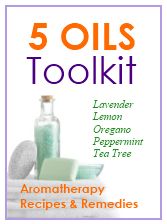While purists prefer extraction methods such as distillation, which gives the purest essential oils, sometimes heat is used to extract these oils. Some plant material, however, cannot tolerate the heated forms of extraction such as steam distillation. The high heats used in these processes usually damages these plants, and, once damaged, their essential oils too are also damaged by the heat, and are no longer available for extraction.
In these situations, as well as a few other special cases, solvents such as ether, ethanol, methanol, hexane, alcohol and petroleum are used instead of heat.
However, even for the non-purist, the problem with using solvents to extract essential oils is that, most of the time at least, residual solvents or other impurities remain in the end product. Because they're impure, most aromatherapy practitioners generally refuse to use them.
As I have mentioned elsewhere, there are going to be times when solvent extraction does make sense. The process, however, requires a knowledge of the appropriate applications of the proper chemicals, and is somewhat confusing for the layman to understand, but, in general it is as follows.
First of all, the organic plant material must be washed in a bath of hydrocarbon solvents.
The purpose of this washing process is to dissolve unnecessary plant materials, including the aromatic molecules, waxy matter and pigment. Then the dissolved matter mixes in with the solvent.
How to make over 130 natural home remedies & aromatherapy recipes using only 5 essential oils.
|

|
After the washing of the botanical matter itself, the residual solvent mixture is then filtered and distilled under low pressure.
After this distillation and some further processing, either a resin or a concentrated concrete will remain. More processing, using alcohol, helps extract the essential oils.
While the description of the process seems lengthy, the actual process itself is a fast, cost-effective method of essential oil extraction, but there is a downside to it. As you might expect, with solvent extraction, residual solvents may remain in the extracted essential oils and their presence can cause problems if used by individuals with allergies or who have sensitive skin. That's the main reason why these essential oils which were extracted using solvents are commonly only used in the manufacturing of perfumes and fragrances, not in massage, aromatherapy where there is contact with the skin, or skin care products.
Super Critical Carbon Dioxide (CO2) Extraction
This is one of the newer methods of essential oil extraction. The end result of super critical carbon dioxide (CO2) extraction is a super-concentrated, high-quality version of the essential oil. This rapid extraction method makes use of low temperatures combined with high pressure to transform carbon dioxide, normally a gas, into its liquid form. The carbon dixoide is inert.
What this means that it is the carbon dioxide is non-reactive and therefore cannot form another chemical compound. When the extraction process has been completed, the carbon dioxide is easily converted back into a gaseous state which is easily removed from the essential oils which are in a liquid form.
Although CO2 extraction produces one of the purest forms of essential oil, it is still not widely used. As the equipment needed for this extraction process is very expensive, this tends to keep production costs high. If production costs are high, then the cost of the finished product, the essential oils that are produced via carbon dioxide extraction will also be higher than with other, simpler extraction methods.
Maceration
In this essential oil extraction method, hot oil is used as an agent to...well...rip apart cell membranes. The treated plant material is then saturated with hot oil and allowed to soak until the cell membranes are completely ruptured.
As the cell walls break apart, essential oils are released into the oil base in which the plant material is soaking. When the necessary release period is complete, the plant material residue is removed from the oil. The remaining essential oil then gets decanted for use in aromathearpy and other practices.
Benefits of Aromatherapy
Reiki


